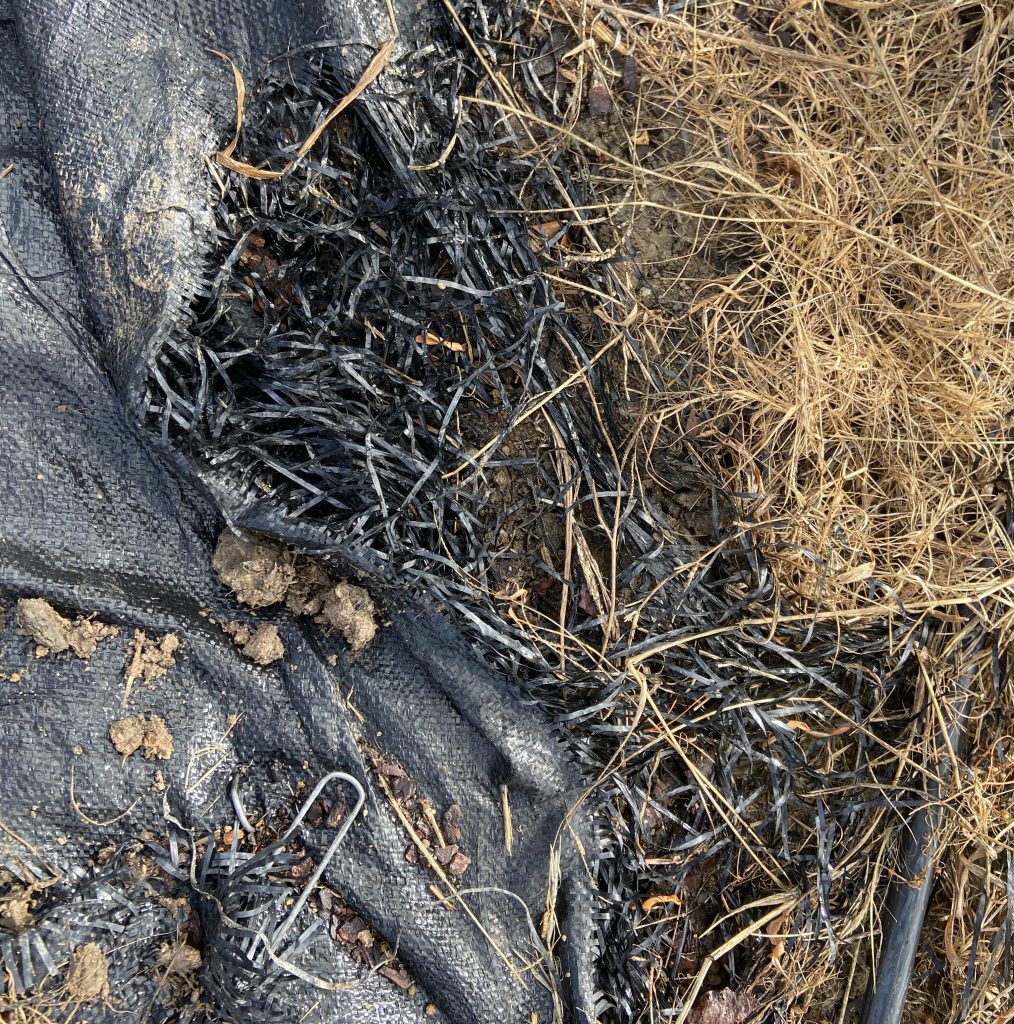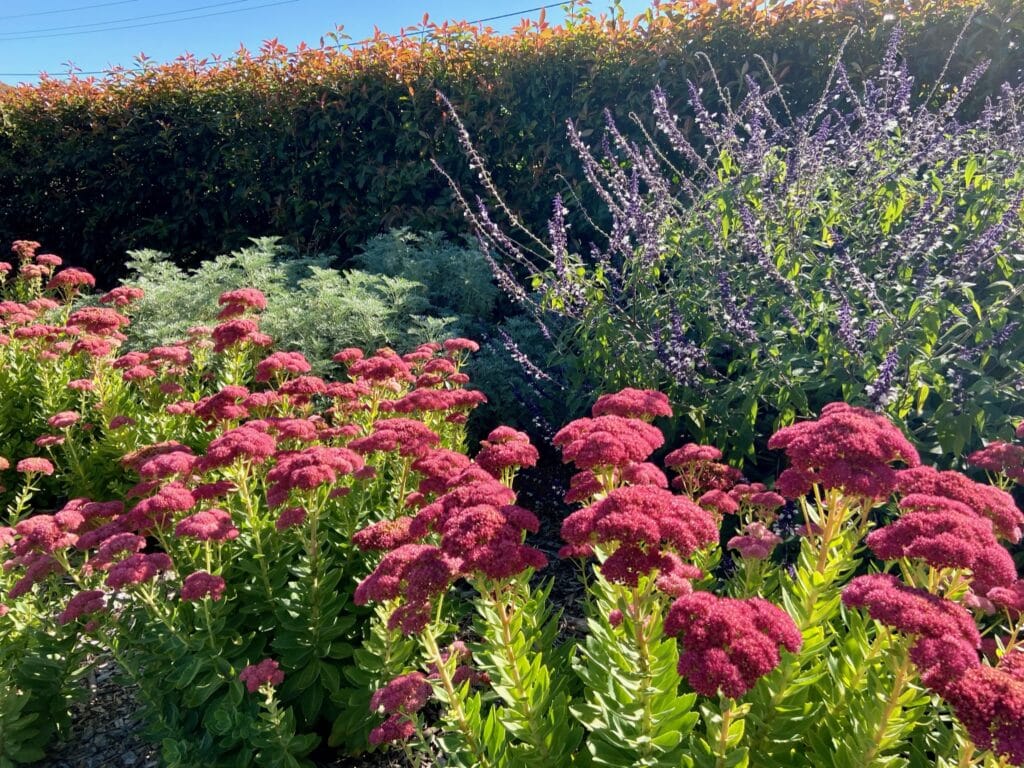We live in a rural area where often a solid fence is not allowed. Instead, hedges are used to provide privacy, define areas within a garden, and to screen unwanted views such as roads and sheds.
With a big building and renovation boom we are seeing new hedges going in left and right, but sadly they are often not being given their best chance to survive. Here we share the top 5 issues we see every day, and what you can do to ensure that your hedge has you the envy of all your neighbours!
1. Choosing height over density
One of the most common reasons for installing a new hedge is for screening – to block the view of an ugly shed, or to stop neighbours from sticky-beaking in your garden for example. When you are in a hurry to get a new hedge established it can be very tempting to choose the tallest plant!

Retail nurseries know this, and often they will stop pruning some plants to allow them to grow tall to entice you to buy them. The best choice, however, is the plant that has been kept pruned to a shorter, bushier shrub. Hedge plants multiply their branches when they have been pruned – 2 or more new branches grow from each pruned branch. The more a plant has been pruned, the more branches it will have.
If you start with a tall plant with a single stem and no branches then your hedge will never have any branches until it has been trimmed, and unless it is trimmed low to the ground it will never have low branches. If you want a dense hedge, start with a dense plant.
2. Lack of pruning

Planting a bushy shrub is a great start, but if you then never prune it you will end up with very long branches, and again the hedge will be very sparse. Instead, regularly give the hedge a light prune to encourage extra side branches to grow and let it grow thick before you let it grow tall.
3. Too much competition
If the roots of your hedge are competing with other plants (including grass) then the chances are it’s not getting all the nutrients it needs to grow healthy and strong. Make sure you clear out any grass and other plants from the root zone. The size of the root zone depends on the size of the hedge, but as a general guide it’s the area directly underneath all the branches. Once you have cleared the area give your hedge a good feed with some premium compost and organic fertiliser, and a layer of around 7-10cm of mulch. The mulch helps to keep the soil from drying out, suppresses weeds, and contributes to the organic content of the soil.
4. Insufficient soil preparation
When you are planting any new plant soil preparation is very important. For a good healthy plant we want the roots to spread out. The roots are going to be seeking out nutrients and water, so to encourage them to spread you should prepare a large area of soil with compost, fertiliser and mulch. Prepare a long and wide trench, and incorporate gypsum if clay is an issue. If you prepare only the little hole that the plant is going into then the roots will take longer to spread and establish.
5. Plants too close together
The spacing of plants can have a big impact on the health of those plants, and a great hedge is a healthy hedge! When plants are crowded together the leaves don’t get enough light or airflow which can lead to a pest infestation or disease.
Spacing does depend a lot on what you are planting and also how big you want the mature hedge to be. As a general rule you can multiply your desired mature height by 0.3. If you want your hedge to end up being 3m high the plants should be spaced 90cm apart. Don’t be tempted to plant closer together just because you bought smaller plants! A 1 year old plant and a 5 year old plant of the same species will still end up the same mature height!

Committed one of these faux pas? Have no fear! Give your plants a good hard haircut (don’t be scared!) and a good feed with fertiliser, add compost and mulch (but keep them away from the trunk to avoid collar rot), and watch your beautiful hedge take shape!
Blake is a licensed landscaper in the NSW Southern Highlands.






